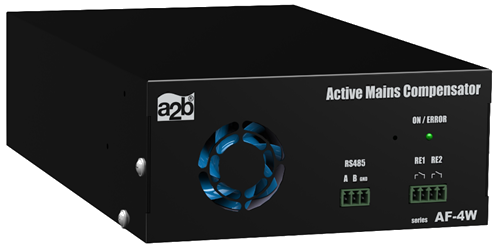The A2B company introduces a solution for the problematic of reactive power with tenable economic costs.
Bill of cost for electrical energy consists of two items, active power (kW) and reactive power (kVAr). The reactive power can have capacitive or inductive characteristics. Both items are billed according to the regulations set by the Regulatory Office in each country.
– reactive energy of a capacitive character – is defined as a supply of electric energy (kVArh)
– reactive energy of an inductive character – is defined as a loss during supply of electric energy (kVArh).
Both these items compensate each other during operation, but their amounts are never equal to zero under normal conditions and as such, with regard to billing fees of the electric energy, it‘s more efficient to set the reactive electric energy for the inductive property with power factor cosϕ>0,95,> as it results in billing fees only for the active power (kWh) with penalty fees not billed
Main advantages of the power factor correction device
- Saving consumer’s costs by compensating the reactive power, which can contribute to annual financial savings of up to hundreds of EUR, depending on the electric energy consumption on consumer’s side. For example with a consumption of around 1000VArh, it is possible to save more than 262 € per year (URSO-2016, at a price of €0.03 / kVArh). With an expected minimum lifespan of 15 years, it is more than 3900 €. The savings may vary slightly depending on the distribution company.
- Electronic correction power factor – capacitive and inductive items.
- Developed by using most advanced technologies:
– based on the DSP (Digital Signal Processor) – enables implementation of the most advanced managing algorithms which help achieve better quality and flexibility of the system.
– minimizing dimensions by applying SMT (Surface Mount Technology) technology. - Fulfils the role of a specified filter, eliminating the impact of reactive load on the supply electric network.
- As opposed to a passive filter, it can dynamically adapt correction load and generate corrective current that results in eliminating reactive energy values almost to zero.
- Power losses of the power factor correction device, in comparison to a passive filter, with the same operational parameters are much lower.
- Compared to passive filters it takes much less space.
